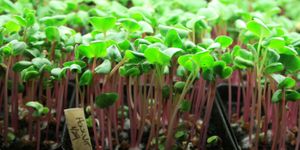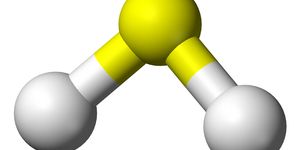Low Sperm Production may be Linked to low Cell Energy
New sperm have to be continuously made for successful human reproduction. Scientists sought to learn more about the mechanisms of that process, which could hold clues as to why fertility declines as men get older, and potentially to open up avenues for infertility treatments. Reporting in the journal Genes & Development, researchers at Kyoto University in Japan have learned more about how the Myc gene plays a role in the self-renewal of mouse spermatogonial stem cells (SSCs), which make sperm. The work is summarized in the short video below.
"So-called Myc genes play an important role in stem cells' ability to self-renew," explained the senior author of the new work, Takashi Shinohara, who added that SSCs have a special quality; they are "the only stem cells that transmit genetic information to offspring."
Increased expression of the Myc gene exerts an effect on self-renewal division. In this work, the researchers found that Myc regulates the self-renewal of mouse SSCs by controlling glycolysis, one way that a cell meets its energy needs.
The investigators suppressed the Myc gene in SSCs and injected them into mouse testes, and in control mice, injected normal SSCs. Looking at the number of SSCs two months later, there were far fewer abnormal SSCs than normal SSCs. When the researchers assayed the gene expression, it showed that in the abnormal mice, the ability to self-renew was disrupted, and potentially had an effect on the production of sperm in those mice.
"We found changes in the expression of genes that would slow the cell cycle," said Shinohara.
Myc-suppressed SSCs were able to self-renew, but did so at an abnormally slow rate. Following up on this finding, it was found that not only was the self-renewal rate slow, glycolysis was impaired. Their findings suggest that insufficient energy could be to blame for the slow self-renewal.
"A difference in glycolysis could explain natural differences in SSC self-renewal between mice," explained the first author of the study, Mito Kanatsu-Shinohara. "DBA/2 and B6 are two mouse types in which SSCs are know to self-renew at different rates." Looking at those two types of mice, the researchers found higher glycolysis levels in the cells of DBA/2 mice.
"These findings could have important implications for infertility research in the future," said Shinohara. "Stimulating the metabolism of SSCs could improve their proliferation. However, more careful study of the molecular pathways is necessary."
If you would like to know more about glycolysis, watch the video below from Khan Academy.
Sources: AAAS/Eurekalert! via Kyoto University News, Genes & Development








